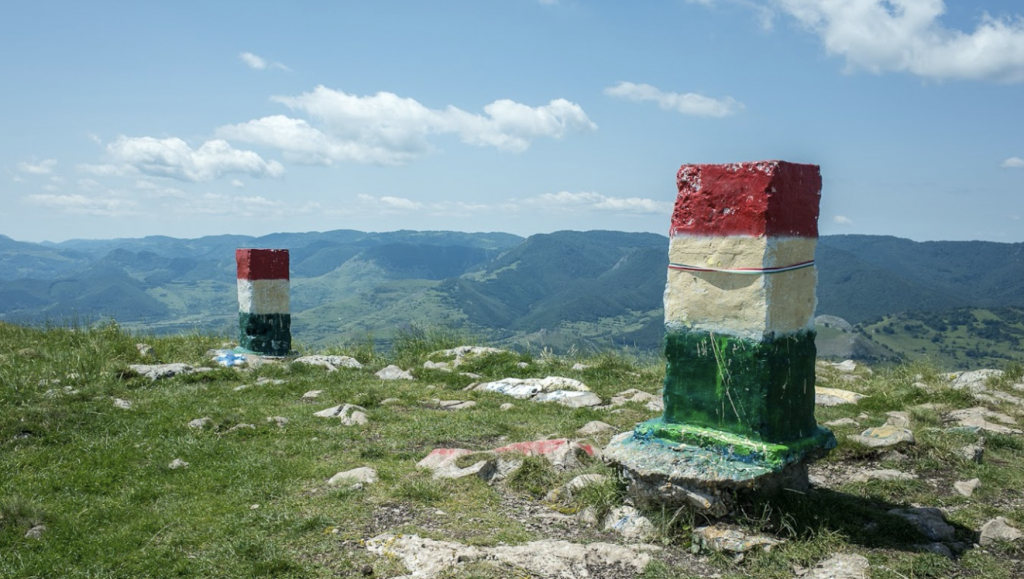Two milestones located on the top of the Székelykő/Piatra Secuiului or the Rock of the Szeklers – a popular choice for hikers – have become the location of a remote dispute between two ethnicities: Romanians and Hungarians. Over the past 10 years, the two concrete milestones placed 1,200 meters above sea level have been painted in the colors of either the national flag of Romania or those of Hungary’s. The milestones allegedly represent the border between Fehér/Alba and Kolozs/Cluj counties.
As the hiking season opens, the Rock of the Szeklers becomes a popular place to visit due to the stunning views from the mountain peak. Tens of thousands of tourists choose Székelykő as their hiking destination every year, and some “tourists” carry paint with them as well. Depending on who has painted them last, when you get to the top of the mountain, you’ll see the milestones in the colors of either the Romanian or the Hungarian flag. The two milestones also serve as a messaging board for these “tourists,” as you’ll sometimes find a variety of texts written on them, some with a nationalist tone.


The reason for this type of dispute is unknown since both Hungarians and Romanians live in the area; but it is ongoing, and there’s every indication it won’t stop as long as the two milestones are there.
Torockó has a majority Hungarian population at 94.1 percent, according to the 2011 census. Surrounded by stunning mountains and known for its unique houses and folk costumes, Torockó/Rimetea is one of the most beautiful villages in Transylvania. The village was awarded the European Commission’s Europa Nostra Award for the conservation of its varied cultural heritage and protecting the La Tène and medieval fortifications, as well as buildings from the 17th and the 19th centuries.
Székelykő is an elongated limestone hill where there are no trees, but it is interrupted by a ravine, the northern part of which is called Várkő. Because of this ravine and the huge size of the landmark, the villagers living in the northern part of Torockó witness a strange phenomenon: the sun rises two times each day. On the third cliff (Vársziklája), one can see the remains of Székelyvár, a fortress built in 1253 and which, until the 1600s, served as a refuge for the locals in times of siege.
Title image: View from the Rock of the Szeklers. Photo: István Fekete